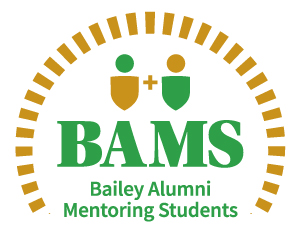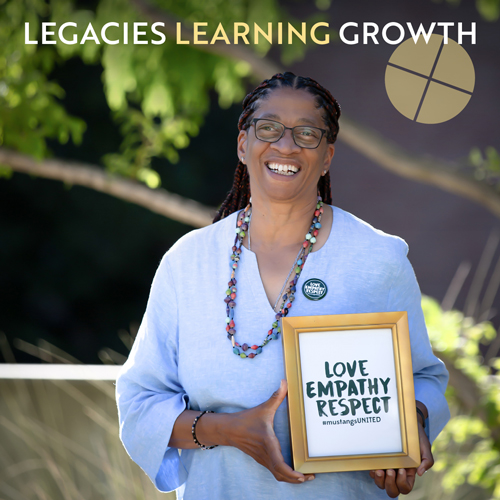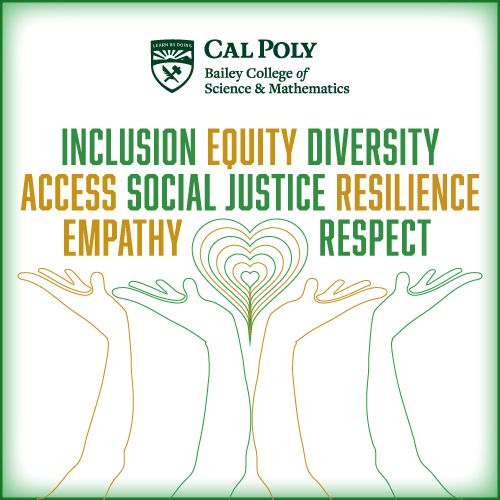Ignored Inequities
 Illustration by Eileen Odanaka Vavra, photo by Getty Images
Illustration by Eileen Odanaka Vavra, photo by Getty Images

CAL POLY RESEARCHERS STUDY RARELY DISCUSSED FACTORS AFFECTING BLACK STUDENTS’ EXPERIENCES IN DEVELOPMENTAL MATHEMATICS
APRIL 2025
by NICK WILSON
Firsthand experiences of Black community college students shed light on challenges that can arise and provide insights to help faculty better mentor and guide students.
A Cal Poly study asked broad questions to identify some of the hindrances to learning: What challenges and frustrations do students face in the classroom? How do perceptions shape learning experiences? How can teachers better support historically underrepresented students?
 Through collaborative qualitative research, Daniel J. Almeida, a professor in the School of Education, explored student experiences in his journal article “Rarely Discussed and Often Ignored: Classroom Factors Affecting Black Students’ Experiences in Developmental Mathematics.”
Through collaborative qualitative research, Daniel J. Almeida, a professor in the School of Education, explored student experiences in his journal article “Rarely Discussed and Often Ignored: Classroom Factors Affecting Black Students’ Experiences in Developmental Mathematics.”
"With the history of Black people in this country, in academia, and in mathematics, these interactions can cause stress, anxiety and impede learning.” ~ Daniel Almeida
~Daniel Almeida
Coauthored by Maxine T. Roberts, a higher education consultant and researcher, the study examined faculty and student interactions, racial dynamics, perceived biases and more.
“If we can better understand some of these challenges, we can work toward breaking down barriers for those that don’t progress in their mathematical sequence,” Almeida said. “There has been a push to be more inclusive of community colleges at Cal Poly, with the Transfer Center work and other programs. Certain populations within community colleges can go underrepresented or undersupported. How can we do better?”
Almeida and Roberts, who are both Black and attended four-year universities, interviewed four female and five male students studying in the Southwestern United States, ranging from 24 to 47 years old. Each participant identified as African American or Black. Eight students were enrolled in community colleges and planned to transfer to a four-year college, and one had already transferred from a community college to a state university.
Participant frustrations included faculty unwillingness to repeat a problem-solving explanation or address stumbling blocks effectively. Some expressed feelings of isolation or lack of encouragement in finding different ways to reach a correct answer to a math problem.
One participant said her instructor expected peers to know material from a different course, one she’d taken a decade earlier, leaving little room for questions: “It had been such a long span since I'd taken Math 115 … at another college … When I got here, I found out that I needed Math 125 to get my AA degree … Got into class and every time I raised my hand, my teacher would say, ‘You shoulda got that in 115.’ I was so livid.”
Another said: “There have been many times (the instructor) called out some students for asking for help with the same question over and over. He’s clowned ‘em on it. In my mind, it’s like if I don’t get it, I can’t ask him for it.”
Peer group divisions also occurred: “When it’s time to work in groups, they all segregate themselves. They're all in one group and the Blacks are left to work with each other. It could be in the beginning of the semester or something, and no one knows each other … I can ask a person of another race for help with a problem, and they tell me simply, ‘Oh, I don't know’ or somethin', but they help each other.”
Negative learning experiences are problematic for all students, but they can be amplified for Black students, Almeida said. “With the history of Black people in this country, in academia, and in mathematics, which isn’t an area that many Black folks have had success in, these interactions can cause stress, anxiety and impede learning. For Black students, a critical comment might remind a student of what five people said previously in their lives. That’s not necessarily fair to that faculty member, but it’s part of the student’s experience.”
Almeida said faculty should strive to support and include pupils, with mindfulness of dismissive language and perceived biases.
“It’s part of faculty's responsibility to understand or get to know their students in ways that might help, teach, engage and mentor them,” Almeida said. “Instructors who check on students’ progress, listen amid concerns, and encourage can strengthen students’ beliefs in their own abilities, versus shutting them down.”
Professional development, training and mentoring programs can offer guidance on how to relate to students and effectively assign peer group work, Almeida said.
Since the publication, Almeida has conducted additional research on topics concerning underrepresented and first-generation students, measurements of student success, the impact of social capital (the strengths of networks and relationships in society), and how students can draw upon their personal traits and lived experience to succeed.
Cal Poly alumna Rachel Smith (Education, '18), now a doctoral student in educational counseling at Oregon State University, has collaborated with Almeida and gained a great deal from the experience.
“In the many hours spent together interviewing participants, coding transcripts, sharing articles for literature reviews, writing and editing again and again, I’ve learned that research takes time and patience, and that I'm capable of doing the hard work,” Smith said. “I’ve certainly learned skills that have helped me grow into the researcher I am today. But what I’m most thankful for is the confidence I have developed through doing research with Dr. Almeida.”
Smith added: “I've learned research is connection, research is advocacy, and research is what expands our field.”
SPECIAL Q & A
A conversation between an education researcher and a future educator
 (Left) Daniel Almeida is a professor in Cal Poly's School of Education and a Gallup certified strengths coach. (Right) Shay Allen is earning a Multiple Subject Teacher Education Preparation credential and master’s degree in the School of Education and is also serving as secretary of Cal Poly's Black Alumni Community.
(Left) Daniel Almeida is a professor in Cal Poly's School of Education and a Gallup certified strengths coach. (Right) Shay Allen is earning a Multiple Subject Teacher Education Preparation credential and master’s degree in the School of Education and is also serving as secretary of Cal Poly's Black Alumni Community.
SHAY ALLEN: Were there any personal reasons why you were motivated to conduct your research?
DANIEL ALMEIDA: Black students in general, particularly in subjects like mathematics, are underrepresented in higher education, and I was often the only one in my classes. One motivation was to do qualitative research where we can hear the voices and stories from the students rather than just numbers and quantitative research. We didn’t want to focus only on what’s wrong, but highlight what’s right with these students, how they persevered through barriers. Also, as a former Black student, I was definitely motivated to have instructors read this and think about how they interact with students of all races, black students in particular, who have had a particular experience in this country and in higher education.
SA: Your research is very relatable to me, especially having to go through the math series here at Cal Poly. I'm from Texas and I had been taught, “This is the right way and you can’t do it another way.” When I arrived to Cal Poly, I was asked, “Let me see how you do it,” and I really enjoyed that.
DA: That was one of the things that came out of the study that most stuck with me. Comments from the professors: “That's not the right way. You have to do it my way.” The old ways might still work, but sometimes new ways come from creative thinking students. With math or anything, there can be multiple ways of arriving at a solution. And when you shut down people who have been shut down in so many other ways, it’s an added layer of hurt.
SA: I understand where you're coming from. I failed the first of three Cal Poly math series classes. The teacher wouldn't let me expand on my thinking or try something different, and she didn’t understand why I was struggling. I came to realize she was stuck in her ways. She did a grade check and called up each student and tried to cover our grades, but that didn’t work. I know other people saw my grade because I saw theirs. I was very disappointed and in tears. I called the department head and told her the situation. It was a defining moment for me as Cal Poly student. I started the series again with a different teacher. I saw the importance of how you teach to students. The second teacher was amazing and allowed me to explore what and how my classmates were thinking when it came to strategies to solve math problems. Both teachers changed my perspectives!
DA: I didn't have the scars from math in the same way that others had. I'm so impressionable with teachers that I think that would have destroyed me. In conducting this research, I was able to remove myself emotionally a little bit, because I didn't have quite as much trauma around math.
SA: What advice would you give to future educators, especially those committed to equity and making a lasting impact on their students’ lives?
DA: Don't let graduation day be the end of your education! You have to continually educate yourself. Not just reading books, it's talking to and learning from actual people. I think talking to people about their experiences is perhaps the most illuminating.
Read this group's research publications: Rarely Discussed and Often Ignored: Classroom Factors Affecting Black Students’ Experiences in Developmental Mathematics (Roberts, Almeida)





